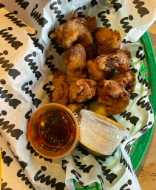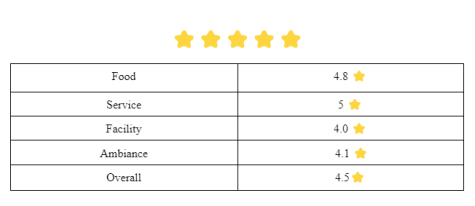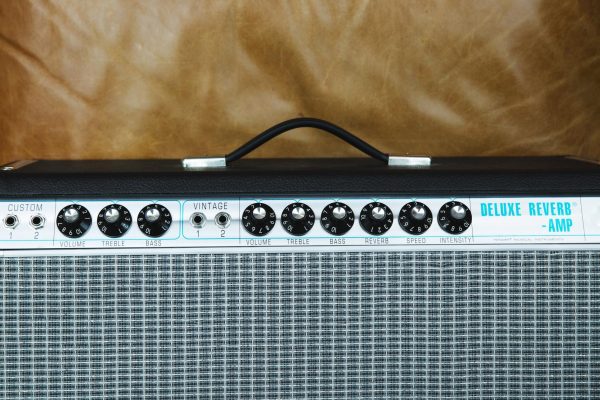“Ima” Eat Here Again
October 24, 2022
 Previously in episode one, Haroon and I visited Taiwan. Well, we actually went to a Taiwanese restaurant called Jiang Nan Noodle House. We experienced the ultimate delectables like crab rangoons, braised beef soup, and pork dumplings. On this week’s episode, Haroon and I went to Ima, a Japanese restaurant in Madison Heights, MI.
Previously in episode one, Haroon and I visited Taiwan. Well, we actually went to a Taiwanese restaurant called Jiang Nan Noodle House. We experienced the ultimate delectables like crab rangoons, braised beef soup, and pork dumplings. On this week’s episode, Haroon and I went to Ima, a Japanese restaurant in Madison Heights, MI.
Before we get into the amazing food, let’s talk about the chef and owner of the restaurant, Michael Ransom. Born in Traverse City and raised in East Lansing, he found his passion for cooking when living with his roommate who was a sushi chef. Ransom obtained his degree in culinary arts in French cuisine. He then went on to apprenticeships in San Francisco and Baltimore. Following these apprenticeships and management positions, Ransom went back to his original neighborhood and opened up a casual eatery that featured Japanese cuisine. This was the origin of the renowned noodle place, “Ima”.
Some of the highlights of Japanese cuisine seen at “Ima” involved noodles, karaage chicken, and spicy tuna. There are three different types of noodles: Ramen, Shirataki, and Soba. Ramen noodles were exported from China to Japan in 1868, an action that would revolutionize the country as a whole. The popularity of this type of noodle spurred from tiny rural hubs to the main city. Shirataki noodles are oddly fascinating in that they are made of 97% water and 3% fiber. The word means “white waterfall” due to its incredibly high water composition and pale color. Lastly, the soba noodle, brought to Japan in 300 BC, is made from buckwheat flour. The flour is gray in color, giving those noodles that dark appearance. Next, Karaage chicken, one of the most popular Japanese dishes, is deep fried and served with special mayo. Lastly, spicy tuna made up of tuna, peppers, scallions, and sesame seeds, is served as an amazing appetizer or complement to main dishes like sushi.

The appetizers that Haroon and I ordered were karaage chicken bites and spicy tuna with taro chips. The chicken bites were extremely crispy and when chewed, created an oily sensation. The powdered salt on the top combined with the single drops of lemon provided for perfect saltiness and tanginess of the chicken, contrasting wonderfully with the slight sweetness of the chili oil. Haroon dipped his chicken bites into the chili oil and he said that “it created different dimensions of flavor”: smoky, sweet, and spicy simultaneously. For the next dish, spicy tuna with taro chips, the plating was breathtaking and thoughtful. The vibrant orange spicy tuna in the center of the bowl, taro chips beautifully stacked on the side, with an allotted assortment of vegetables including daikon radishes and cucumbers, attest to the eye-catching plating. The chip was dipped inside the spicy tuna dip and to this day, I have not heard a louder crunch noise. The spiciness from the tuna had a slow attack and a kick similar to wasabi. The vegetables also added crunch and vibrance to each bite, making it visually appealing and healthy. Immediately after the appetizers arrived, the main course arrived in less than 5 minutes.
The term “immediately” was not an understatement and the quality of food did not falter in the slightest because of the speed that it arrived. I ordered the miso ramen, which is miso based and contains chicken stock, vegetables, and pork. Miso is always known to be a remedy for gut health and it soothes your stomach with a warm feeling in each gulp. This warm feeling combined with the sweetness of peanuts and the smooth and soft egg exemplifies the taste of this miso ramen dish. To top it all off, the perfectly cooked, piping hot pork melts in your mouth as you pair it with each bite of the noodles. Haroon had shoyu ramen, which is a soy sauce-based broth. It puts together a tangy taste and a strong umami flavor into one warm dish. This tangy taste contrasts with the juicy baby corn and the peanuts that added the perfect amount of sweetness to make each bite of the dish tasteful. The silky smooth seaweed complemented every bite with texture and a satisfying salty aftertaste. The chicken was perfectly cooked and extremely soft, enveloped by the rich shoyu ramen broth. Haroon said that the ramen was so good that he “would swim in the broth.” Ultimately, the experience at Ima was a complete joy and a true representation of Japanese cuisine. 
If you want to experience unique foods or you are just a food lover, please check out more of our articles to learn about different cultures. Also, be ready for many more reviews to come!











Mateo Orozco • Dec 2, 2022 at 11:12 am
Bro, sick. Just sick. My bored head read this mid class and was immediately teleported to a noodle heaven. Keep it up.
Jinane English • Oct 24, 2022 at 7:17 pm
A wonderful article boys! Great job. Guess where Ima go this weekend? You guessed it, Ima